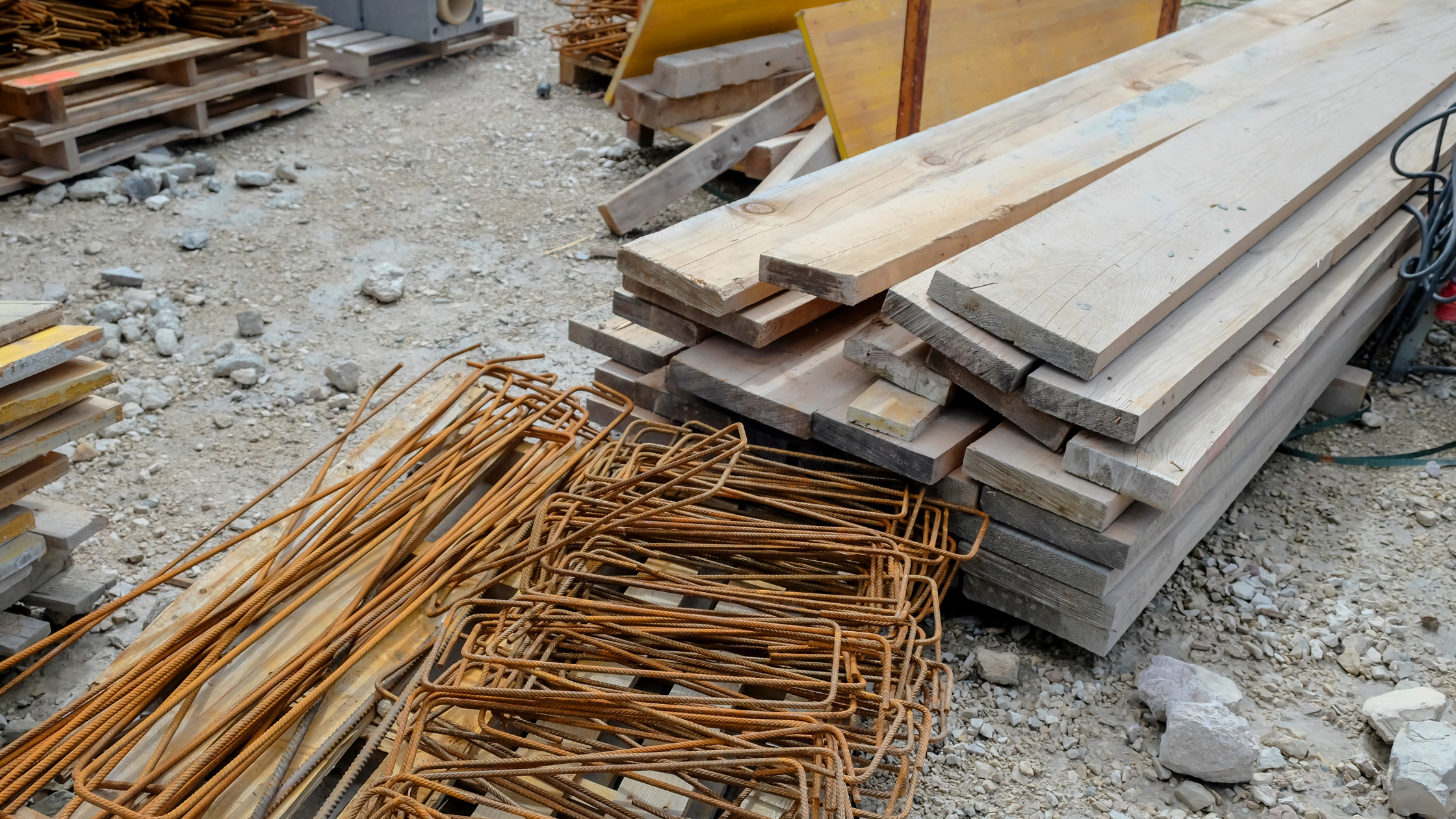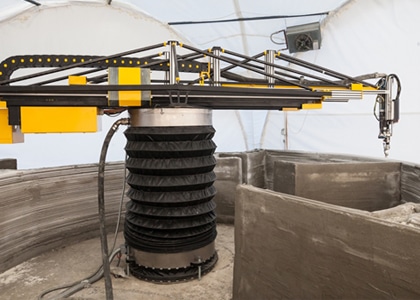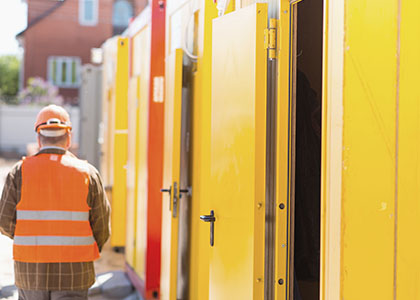Home / Blog / 4 major problems facing the saudi construction industry and how you can solve them
SUMMARY
There is no denying that the COVID-19 pandemic has come as an unprecedented disruption to the construction industry. Not only are you facing an overall lowering of productivity, but also budget overruns and delays due to lockdown measures and other restrictions.
In fact, a report from GlobalData, a leading analytics company, has said that the construction output growth forecast for the Middle East and North Africa (MENA) region for 2020 has been cut to -4.5% from the previous estimate of -2.4%.
Due to reduced manufacturing output and supply-chain issues on account of the pandemic, materials are harder to source with delayed timelines for delivery. What’s more, the current challenges add to all the other difficulties already facing the sector. Construction companies within the region, and especially at home, have been struggling to complete projects on time, source skilled labor and subcontractors, combat rising costs of materials, manage client demands/ expectations, while trying to attract new business, obtain certifications and permits, fund projects through loans, remain green and sustainable, as well as ensure job site safety.
So, how should companies move forward?
Read on as we highlight possible concerns and their solutions as you plan a recovery post-pandemic.
INDEX
- Problem: Waiting for payments
- Problem: Old technological systems
- Problem: Extra scrutiny over safety and quality
- Problem: Limited reach and clientele
4 MAJOR PROBLEMS FACING THE SAUDI CONSTRUCTION INDUSTRY AND HOW YOU CAN SOLVE THEM
While the strict lockdowns instituted within Saudi at the peak of the pandemic have been scaled back and work has resumed on sites, the truth is that many construction companies are facing headwinds, and will be through 2021. The challenges brought on by the pandemic are unprecedented and construction contractors are advised to balance short-term measures so that they are better placed to survive the crisis in the medium term as they move towards eventual profitability.
Listed below are four issues you are likely to be facing or will come up against soon:
- Problem: Waiting for payments

Late payments are every construction organization’s nightmare. They disrupt cashflows and create a chain reaction leading to unpaid suppliers, subcontractors, and even employees. You lose out on discounts and can be faced with stricter payment conditions with suppliers in the future. Delayed payments can also affect your market credibility, with suppliers changing their terms, such as pressing for an earlier clearing of accounts or insisting on advance payment. This negatively impacts your cashflows further. Non-payment of suppliers, subcontractors, and employees disrupts work on construction projects leading to delays, missed deadlines, and added costs.
Furthermore, to institute social distancing and safety measures, government-ordered lockdowns have also impacted payment schedules. Estimates state that three months of lockdowns cost contractors in the region an approximate $30bn in revenue. As the KSA contributes more than 54% to total construction in the area, the impact has been keenly felt.
Admittedly, whilst many factors lie beyond your control, you need to get back to business so that you can start collecting payments to meet your obligations. As the industry works towards recovery and profitability, construction companies can use the following solutions to collect on payments.
Solution 1: Institute industry best practices

As markets open and work on projects resume, here are some tips to help ensure that you get paid:
- Set clear terms and conditions: The terms and conditions in the contract document should be clear to all parties from the outset. Ensure scope, the timeline for payment, and so on are clarified with all parties before work on a project begins. For example, when deliverables are stated upfront, people are often more inclined to honor them.
- Submit claims and invoices on time: All invoices should be clear and must include supporting documentation. Ensure that there are no mistakes on the invoice as they can further prolong payments.
- Follow up immediately on delayed payments: A simple phone call a day after payment is due may be all that’s required to get a customer to pay. Often non-payment is simply an oversight, forgetfulness, a clerical error, or a person on sick leave. Don’t rely on verbal responses – send out a written notice of late payment within seven days of the invoice not being paid.

- Establish goodwill: Happy customers are more likely to pay on time, whereas unhappy customers will deduct monies from invoices, look for excuses not to pay, or deliberately drag out payments. Everyone realizes that 2020 has been an unusual year. Client relationships are long-lasting and winning goodwill right now can pay back huge dividends in the future. If you have the margins, you may show a little leniency to a longstanding client by adjusting the terms of the contract or extending payment timelines. Similarly, offering a small discount for early payments often results in clients paying invoices on time. However, if things are not working out, and to protect your company from further losses, it may be more prudent to terminate a contract – but only after following strict procedures. Terminating a contract for the wrong reasons can put you in breach of the terms of the deal, jeopardize further payments or even involve your company in litigation.
Solution 2: Preserve liquidity and maximize revenue
An immediate priority for contractors is preserving liquidity by limiting unnecessary expenditures in areas ranging from corporate costs to petty cash on projects.
- Use smart management systems: Streamlining administrative processes through advanced management systems is always a good idea for a company but now, more than ever before, you should be using smart systems that keep tabs on finances efficiently. In cases where it is safe to do so, you can retain revenue by continuing work on project sites. For example, sites with the right safety protocols and SOPS can be retained if allowed by local authorities. You can also increase liquidity through sale-and-lease-back programs of selected assets. Keeping tabs on all these processes through optimized management systems saves money.
- Negotiate laborer terms: It is advisable to negotiate paid and unpaid leave policies with contractual workers on shuttered projects. You can reallocate excess staff to operation and maintenance functions, which will likely be less affected as a result of the crisis.
- Source locally: You can also reduce manpower costs, by hiring and sourcing locally. Buying from local construction suppliers can significantly reduce delays as well as costs during the COVID-19 pandemic. Local suppliers already have existing sourcing streams and active supply chains. When you buy from them, they give you a competitive price that does not reflect logistics costs.
- Problem: Old technological systems
There is no denying that most construction companies are using old-fashioned technologies to manage administrative and onsite work. These antiquated systems are holding back the industry. In fact, studies show that only 6% of construction contractors in the Kingdom are utilizing machine learning in their businesses.
An industry-wide reluctance to adopt new technologies is resulting in many inefficiencies. In fact, it is revealing to note that a staggering 30% of all the world’s waste every year comes from construction. As the construction sector globally comes into criticism for its impact on the environment, construction companies need better collaboration and supply chain management for optimal and sustainable functioning. And with COVID-19 related social distancing measures still in place, systems of in-person and in-paper information sharing can no longer work.
As construction work becomes more complex, and as technology continues to transform the way the industry works, you need to be smarter about how you operate. Accomplishing this in a high-risk, low-margin environment means data-driven decision-making is that much more important for contractors who hope to maintain a competitive edge. The better the business intelligence, the greater the advantage you will have as you plan a route to recovery and profitability.
Solution 1: Adopt onsite operational excellence
It pays to keep in mind that today’s modern construction projects create mountains of data. Effectively processing and analyzing all this information requires technologies like cloud computing, integrated software platforms, and mobile applications. By taking advantage of digital transformations you improve performance and get access to insightful statistics that highlight your KPIs to help with better future planning.

- Use smart systems: Smart systems not only improve administrative processes within your construction company but also bring increased safety to your work sites. Accounting and project management software enhance the supervision of supply chains. They help you minimize delays on projects by keeping a constant eye on your supply base to identify potential bottlenecks and replace or diversify your suppliers as needed. Smart systems also help companies reassess inventories, taking into consideration new lead times to ensure business continuity. Fully integrated, cloud-based enterprise resource planning (ERP) platforms utilize a uniform data set across construction organizations and allow users to collaborate and work in real-time. They connect entire project teams, deliver a deep understanding of project data, automate workflows, boost productivity, and increase profit margins whilst cutting construction costs.
- More efficient remote operations: With cloud management systems you can access data remotely to reduce the numbers of laborers on site. These systems can also update health policies and operational procedures faster to adapt to pandemic conditions. You can adjust work processes, teams, and schedules to accommodate social distancing. For example, rather than bringing everyone to the job site for a single eight-hour shift, you can move to smaller teams that work on staggered timings. Technologies such as drones can reduce the size of teams on sites – particularly for functions such as inspections. Powerful solutions that provide remote field view and field management further extend the power of ERPs beyond contractors’ back offices to boost data capture and productivity.
Solution 2: Invest in future technologies now
As you work on coming out of the challenges brought about by this year, you have to think past collaborative efforts from digitization in construction.

- Robot technologies: The next decade will see the construction industry moving to more advanced technologies like robotics. You need to be actively researching and investing in robot technologies that can handle repeat tasks on the field. Whilst the future of construction seems to be bright with many technologies already available and more still in research and development, budgeting for upgrades and investment in technological tools is no longer a matter of choice, but rather a necessity. Companies that are not embracing this digital revolution will be sidelined by those that do.
- Problem: Extra scrutiny over safety and quality
As the Gulf construction markets mature, there’s more demand from regulators and citizens for improved safety, better quality, and sound environmental practices. With increased scrutiny of labor and emphasis on on-site safety, maintaining a good reputation on these matters is more important than ever before. Construction companies like yourself, therefore, need to take the lead and audit their own practices. Here are some ways to do just that:

Solution 1: Hire and source local
As architects design increasingly elaborate buildings, and as new technologies are integrated into all steps of the construction process, finding the right person to do a difficult job is more important than ever. So, source within the Kingdom and help build towards a local portfolio of specialists. As travel restrictions continue, sourcing material and specialists nearby provides you with insightful industry knowledge and ground experience. Local relationships come with added cost benefits. It also means that work gets done faster and on schedule.
Solution 2: Prioritize worker health safety
Although health and safety already are a priority in the construction industry, you need to continue keeping workers safe from the COVID-19 virus. This means maintaining hygiene measures, educating workforces about social distancing on worksites, and mandating masks and gloves, even when a particular job doesn’t require them. It pays to be vigilant right now so that you can mitigate risks in a timely manner.

- Problem: Limited reach and clientele
The fact that nobody expected the impact of the pandemic goes to show that disruptions can occur at any time. As a business, you need to be actively searching for new revenue streams. But in an industry waiting to be fully opened, how are you to do this?
Solution 1: Diversify into more stable businesses
Contractors should consider diversifying into service offerings and sectors that are less volatile to market shocks. One example is operations and maintenance – a natural adjacent market that is downstream in the construction value chain and can be digitally managed.
- Modular and offsite construction: One of the most significant ways for the construction sector to achieve the productivity needed for survival is through off-site/modular construction practices. In the Kingdom, modular and offsite construction is expected to grow by 50% by 2023. Adopting a modular approach presents contractors with a number of opportunities – you can make better use of labor, harness lean methods, as well as the drive towards standard, proprietary-design content that can cut timelines, increase margins and create opportunities for differentiation. In fact, McKinsey has predicted that offsite construction methodologies can increase speed by as much as 50% and reduce costs.

Solution 2: Adopt an agile business model
As you plan recovery, it is also a good idea to think outside the box. In the medium term, adopting an agile operating model can help you become more resilient. Examine how you can improve your cost structure by replacing fixed costs with variable costs whenever possible. For example, salary structures of employees can have a lower base salary and a higher variable cost component aligned to performance.
Companies should revisit their decisions about which capabilities to retain internally and which to outsource. In general, core activities such as project management and control should be internal, whereas some support (like material sourcing) and secondary services could be outsourced to reduce fixed costs.
We’ve already mentioned that investing in digital technologies can help you react better to market disruptions. More advanced technologies such as robotics and additive manufacturing, among others, can reduce unnecessary manpower costs. Alternative building methods such as modular, offsite construction can improve productivity and project delivery times. All of these technologies have a common theme – they help contractors become more efficient, productive, and less affected by market challenges and disruptions.
Whilst the COVID-19 epidemic has been a massive disruption to the construction industry, it will eventually end. By taking the steps discussed above, contractors can limit their losses and emerge stronger for the future.
For information on how you can mitigate challenges in the construction sector, or find out how Binex can help provide support during this time, get in touch with us.










